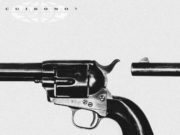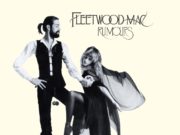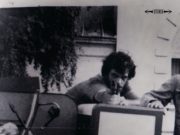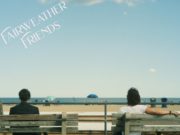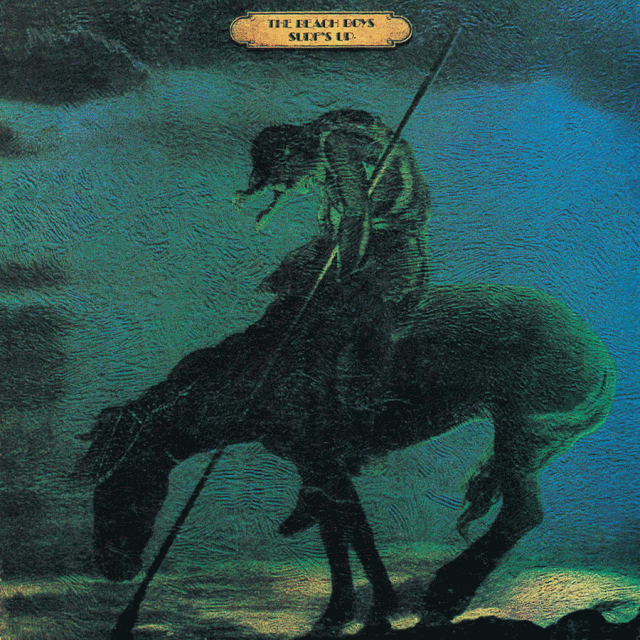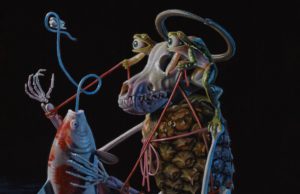Two decades ago, new albums from The Beach Boys, De La Soul, Wheatus and others were spinning away in my portable CD player. Here’s what I had to say about them back then (with some minor editing):
The Beach Boys
Sunflower | Surf’s Up
Carl & The Passions | Holland
The Beach Boys In Concert
15 Big Ones | The Beach Boys Love You
M.I.U. Album | L.A. (Light Album)
Keepin’ The Summer Alive | The Beach Boys
I owe The Beach Boys an apology. It’s not that I’ve actively dissed them. Rather, I dismissed them. Wrote them off as the corniest nostalgia act since Sha Na Na — a bunch of 50-year-olds in Hawaiian shirts who have spent 30 years on the state fair circuit, milking a handful of hits and one great album they made in the ’60s.
It’s not totally my fault. Like many, I wasn’t paying enough attention to The Beach Boys. I thought I knew the story: How three brothers, their cousin and a childhood friend rocketed to fame with songs like Surfin’ USA, Little Deuce Coupe and Fun, Fun, Fun; how driven, eccentric leader Brian Wilson went on to pen the visionary album Pet Sounds, inspiring The Beatles’ Sgt. Pepper; how Wilson suffered a drug-and-stress-fuelled meltdown that left him a virtual prisoner in his own home for decades; how the band has limped forward since, soldiering on through personnel changes, the deaths of Carl and Dennis Wilson, and Brian’s sporadic reappearances.
Turns out there’s a chunk missing from that tale: The ’70s. Unbeknownst to those of us who were following the latest trends at the time — disco, punk, new wave, rockabilly — The Beach Boys were still slugging it out, writing songs and making albums. Most barely scraped the charts. Some were painfully anachronistic. But others have deservedly become unsung fan favourites. Judge for yourself: For the first time in years, most of the band’s ’70s and ’80s releases — 11 albums issued on their own Brother Records label — are back in print, repackaged onto six CDs. I spent last weekend Beach-combing. Here’s my guide to what hangs 10 and what wipes out:
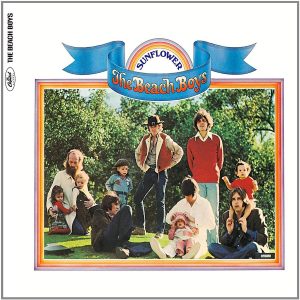
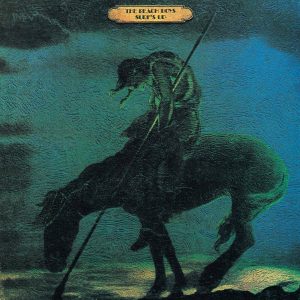 Sunflower (1970) / Surf’s Up (1971)
Sunflower (1970) / Surf’s Up (1971)
A swing and a miss. After a fallow period, the band attempt an artistic and commercial rebirth with Sunflower. They half-succeed. The 12-tracker is a well-crafted, cohesive affair highlighting the group’s strengths — layers of close harmonies (This Whole World), fun-in-the-sun mentality (Add Some Music to Your Day), and Brian’s bizarre mix of childlike lyrics and sophisticated orchestration. It shoulda been a hit. It wasn’t. And when it stiffed, things quickly soured. The turbulent Surf’s Up, released just a year later, finds Brian already pulling away. He contributes just three tracks, ranging from the beautifully tragic ‘Til I Die to the head-scratcher A Day in the Life of a Tree. But even that’s better than the band’s ill-conceived rewrite of Riot in Cell Block #9 as Student Demonstration Time.
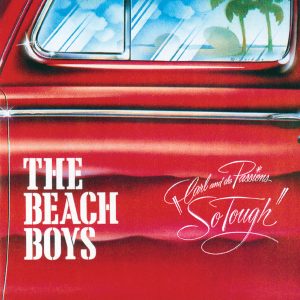
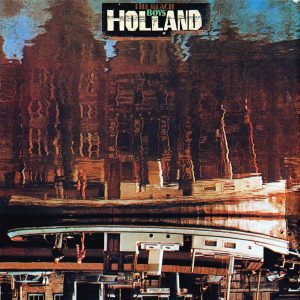 Carl & The Passions (1972) / Holland (1973)
Carl & The Passions (1972) / Holland (1973)
Two steps forward, one step back. Two new members — South African drummer Ricky Fataar and guitarist Blondie Chaplin — herald a new earthy style. On Carl & the Passions, the band dabble in Dr. John-style R&B (You Need a Mess of Help to Stand Alone), jazzy funk (Here She Comes), Band-ish country (Hold on Dear Brother) and gospel (He Come Down), with Brian’s midtempo Marcella the only nod to their surf-rock past. The musical wanderlust further manifests itself on Holland, recorded in The Netherlands without the now-housebound Brian. As a measure of the band’s ability to function without him, it’s OK. But as a Beach Boys album … well, put it this way: It was rejected until Brian coughed up Sail On, Sailor and Funky Pretty. Too bad his other contribution was Mt. Vernon and Fairway, a 10-minute fairy tale about a prince and his magic transistor radio. (No, really.)
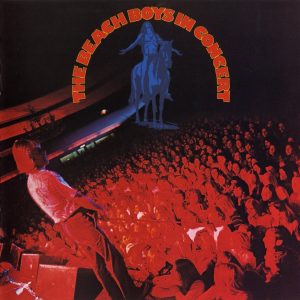 In Concert (1973)
In Concert (1973)
As the story goes, Bob Dylan took in a Beach Boys show around this time and was heard to remark, “You know, they’re pretty good.” I said the same about this live set, which finds the band (minus Brian, of course) enthusiastically rocking and harmonizing on a varied, well-paced set with enough new tunes (Sail On, Sailor, Marcella) to establish artistic credibility, and enough hits (Good Vibrations, Sloop John B., California Girls, etc.) to satisfy fans. At 75 minutes, it drags a bit, and thanks to an audience-free mix, it’s kind of sterile. Still, if you want hits, they’re here.

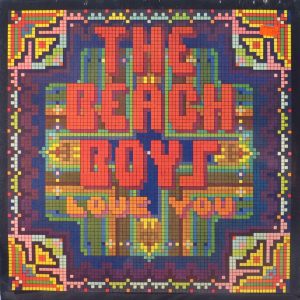 15 Big Ones (1976) / Love You (1977)
15 Big Ones (1976) / Love You (1977)
Many unhappy returns. After the success of hits set Endless Summer, Brian is coaxed out of the bedroom for 15 Big Ones. Clearly, he sees his shadow. Although he pens five songs, they’re pretty dreadful — none more so than TM Song, an ode to meditation. The rest of the album is decent, if uninspired, covers of ’50s classics such as Rock and Roll Music, Chapel of Love and Blueberry Hill, included to ride a wave of nostalgic popularity. Naturally, they follow it with their least commercial disc of the decade, Love You. Essentially a Brian solo album issued under the band’s name, this is Wilson at the height (or depth) of his demented genius: Bare-bones arrangements, acres of squishy synths and mind-boggling songs about ESP, the cosmos and Johnny Carson (“He sits behind his microphone / He speaks in such a manly tone”). Weirdest of all — it’s cool, in a fascinating, rubbernecking-at-a-car-wreck kinda way. It’s better than what lies ahead, anyway.
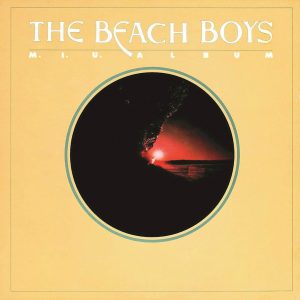
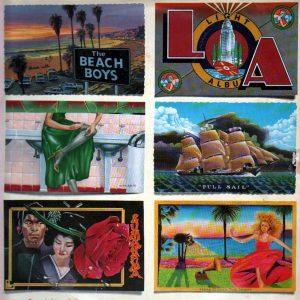 M.I.U. Album (1978) / L.A. (Light Album) (1979)
M.I.U. Album (1978) / L.A. (Light Album) (1979)
The beginning of the end. M.I.U. stands for Maharishi International University, the facility in Iowa where the band recorded. Or at least some of them. Dennis and Carl barely appear, and while Brian offers up some vocals and typically freaky tunes (Match Point of Our Love, a tennis romance), I doubt he spent much time in Iowa. So that makes this a Beach Boys album recorded 1,000 miles from an ocean, without most of the Wilsons. Could it get worse? Yes, it could. On the Brian-free L.A. (Light Album), the band embrace disco with an 11-minute dance mix of Here Comes the Night. Too bad it’s 1979 and disco is dead. L.A. is so grim, its best track is a doo-wop surf cover — of Shortenin’ Bread. Suddenly, 15 Big Ones seems like The White Album.
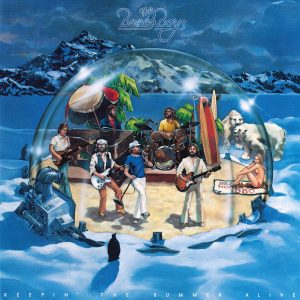
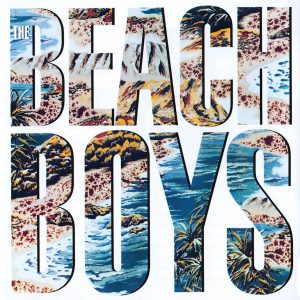 Keepin The Summer Alive (1980) / The Beach Boys (1985)
Keepin The Summer Alive (1980) / The Beach Boys (1985)
The last gasps. Now apparently resigned to Brian’s unpredictability, the band try to work around him, digging through old tapes for tunes (When Girls Get Together dates from 1969) and recruiting new blood — none other than Randy Bachman, who co-writes two songs on Keepin’ the Summer Alive, including the title track featuring his trademark blocky guitar lines. Five years later, on the self-titled Beach Boys album, they repeat the tactic with Culture Club producer Steve Levine, who grafts the band’s signature sound to generic backing tracks, including numbers by Boy George and Stevie Wonder. Not surprisingly, these outings sound more like the work of Beach Boys impersonators than the actual band.
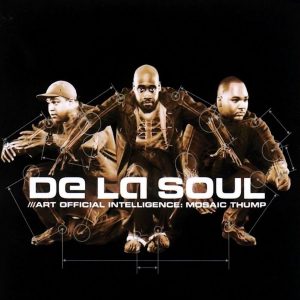 De La Soul
De La Soul
Art Official Intelligence: Mosaic Thump
This is not your father’s De La Soul. A decade ago, the Long Island trio reinvented hip-hop with their CD Three Feet High and Rising, a psychedelic collage of daisy-petal optimism, pop smarts and kleptomaniacal sampling. But that was then and this is now. Posdnous, Dave and Maseo are older, wiser and all grown up. So is their sound, which has darkened and deepened over the years. Their fifth CD, Art Official Intelligence: Mosaic Thump is their hardest, funkiest affair so far. Gone are the light-weight, bouncy grooves and rhymes about magic numbers; now, on thumping, pumping tracks like Thru Ya City, U Can Do (Life) and Declaration, De La discuss urban violence, racial tension and politics with the seriousness of the elder statesmen they’ve become. It’s not all a downer; hooky tracks and brainy, smooth rhythms are still their calling cards, and the skits (a practice they introduced) and guest spots from Busta, the Beasties and others lighten the load. Still, AOI:MT can be as weighty and impenetrable as its title. You’ll be glad De La Soul are back, but you might wish they were having a little more fun.
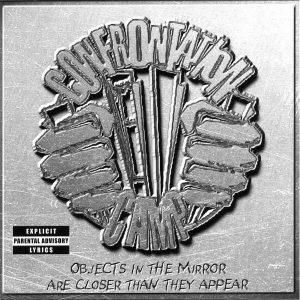 Confrontation Camp
Confrontation Camp
Objects In The Mirror Are Closer Than They Appear
It’s not as if confrontation has been been a word missing from Chuck D’s vocabulary. On incendiary albums like It Takes a Nation of Millions to Hold Us Back, Chuck and his revolutionary rap outfit Public Enemy bum-rushed the music biz with their militant stance and hard-edged sound. Sadly, Mistachuck’s new side project is nowhere near as groundbreaking. Instead, it takes up where PE left off on Bring the Noise, their pioneering rap-metal collaboration with Anthrax. Joined by Professor Griff and novice Kyle Ice Jason on vocals, and backed by an underwhelming metal trio, Chuck attempts to bring the noise and rock the mic, but not even he can get a groove going over these listless, lumbering garage-rock riffs. The lyrics to Brake the Law, Che and Jasper (about the racial killing of James Byrd in Jasper, Tex.) prove Chuck still has plenty to say. All that’s holding him back now is a second-rate metal band.
 Wheatus
Wheatus
Wheatus
Something just ain’t right with Brendan Brown. Then again, that depends on your definition of right. If it includes a gleefully off-kilter sensibility and an ability to turn screwball lyrics and self-deprecating wit into crunchy, sugar-rush pop perfection, then Brown is right as rain. It also helps if your idea of pop perfection includes layers of shimmering vocal harmony, more hooks than a meat locker and a chorus that says, “I’m just a teenage dirtbag, baby / Listen to Iron Maiden, baby, with me.” Along with the sparkling self-loathing of Teenage Dirtbag, tracks like Hump’Em N’ Dump’Em, Love is a Mutt From Hell, Punk Ass Bitch and Wannabe Gangstar belong on your hit parade. Bottom line: This half-hour disc could be one of the best pop debuts of the year — assuming your idea of a great pop band includes Ween, Local H and Fountains of Wayne. Luckily, mine does.
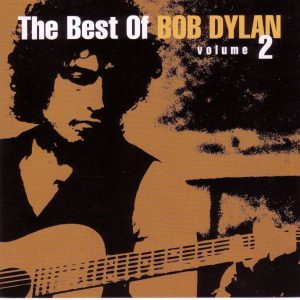 Bob Dylan
Bob Dylan
The Best of Volume 2
Hey, wait a minute. Didn’t this album come out about 20 years ago? Oh yeah, right. That was Greatest Hits Volume 2. Completely different album. Still, if you don’t already have that one, it’s tough to go wrong buying a Bob Dylan compilation. Although this one doesn’t have Like a Rollin’ Stone, it’s got enough ’60s fare (A Hard Rain’s A-Gonna Fall, It Ain’t Me Babe, Subterranean Homesick Blues, Positively 4th Street, Rainy Day Women #12 and #35) to make up for the late-period filler (Changing of the Guards, License to Kill, Silvio). For the collectors, there’s the soulful R&B of Dignity, an outtake from Oh Mercy; the superb Things Have Changed from The Wonder Boys soundtrack; and an EP with live versions of Blowin’ in the Wind and Highlands. Live from where and when? It doesn’t say. Maybe that will be on Best of Volume 3.
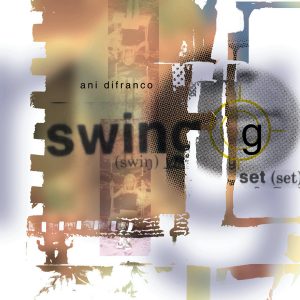 Ani DiFranco
Ani DiFranco
Swing Set
It’s been about six months since urban folkie and indie-label entrepreneur Ani DiFranco released an album — practically an eternity for a woman who issued two solo CDs, a collaboration with Utah Phillips and a series of EPs in 1999. So, to tide over the fans, here’s a nifty little six-track EP for Swing, the latest single from her latest disc, the adventurous hip-hop and electronica-tinged To The Teeth. You get the radio edit, the album track and a stylish remix of the album’s title track. But it’s the second half that’s the real lure: An acoustic cover of Woody Guthrie’s Do Re Mi different from the version on the recent Til We Outnumber ‘Em tribute CD; a touchingly sparse reworking of Phil Ochs’ When I’m Gone from an upcoming Abbie Hoffman biopic; and the real prize, a tense, crackling take on Bob Dylan’s Hurricane that was left off that film’s soundtrack. That alone will hold you for the three or four weeks it takes her to put out a new album.
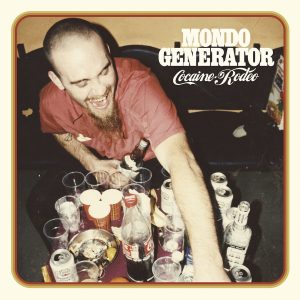 Mondo Generator
Mondo Generator
Cocaine Rodeo
What could be heavier, sludgier and nastier than a solo album by Nick Oliveri, the chrome-domed, billy-goated bassist from Queens of the Stone Age? Well, how about one that not only features Oliveri and QOTSA guitarist Josh Homme, but also Fu Manchu drummer Brant Bjork — all of whom were in seminal desert-rat outfit Kyuss? Yep, that’s right, Cocaine Rodeo is the closest you’ll get to a Kyuss reunion, with the trio rekindling the flame and smoking through a trio of grinding, squealing stoner-rock jams. Not that the rest of the tunes, which feature Karma to Burn drummer Rob Oswald and singer-guitarist Brent Malkus, are any less punishing — this 40-minute outburst is a brain-squishing, eardrum-busting affair from the opening strains of 13th Floor through the Kansas-quoting Dead Insects, all the way to the end of Another Tension Head. What could be heavier? Nothing, really.
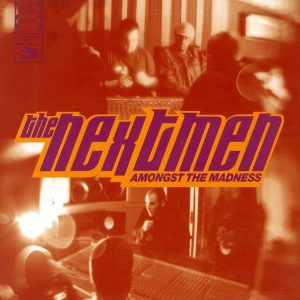 The Nextmen
The Nextmen
Amongst The Madness
The press release says this U.K. DJ duo’s debut is called Moving Amongst the Madness. The CD itself omits the first word of that title. But don’t take that as a sign — this funky-fresh hip-hop offering is a decidedly moving, grooving affair. Nextmen Dominic (Dom Search) Betmead and Brad (Baloo) Ellis claim to be the sons of “prominent figures in the worlds of jazz and rock” (I figure Dom is son of guitarist Jon Betmead; as for Ellis, your guess is good as mine). Their musical upbringings come across on these 17 tracks, which combine neck-snapping rhythms, jazz-funk melodies, spry raps and smart samples into a playful yet tasteful hybrid not too far from De La Soul or some of The Roots’ lighter moments. If they keep it up, they’ll end up prominent figures in the world of hip-hop. Like fathers, like sons.
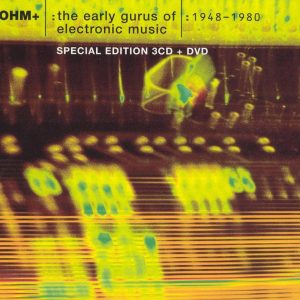 Ohm: Early Gurus of Electronic Music
Ohm: Early Gurus of Electronic Music
Various Artists
We may think of synthesizers as relatively recent musical innovations and of electronic music as even fresher, but their roots go deeper than you might suspect. In the ’50s, early innovators such as La Monte Young, Terry Riley and Steve Reich were monkeying with the first electronic instruments and crudely manipulating tapes, while composers such as Karlheinz Stockhausen and Edgard Varese were pushing the envelope with works that freed music from the confines of melody, key and meter — all of which paved the way for everyone from Can to Brian Eno. Ohm, a three-CD/DVD set, celebrates these avant-gardians, paying tribute to all the musicians above and tracing electronic music from the early tape-loop experiments of Reich and John Cage to the bleep-blooping prog-rock of ’70s ball-carriers like Holger Czukay and Jon Hassell. It could go a little further forward for my taste — Aphex Twin and M-ziq certainly deserve a place in the canon. But even without them, you won’t find a more complete catalogue of influential electronic composers anywhere. Just say ohmmmm …
 Pole
Pole
3
One of the major complaints about electronic music is that it’s too cold — the machines are too precise, too perfect, too predictable. German techno minimalist Stefan Betke has found a way to make machines more unpredictable and human: Break ’em. Or at least don’t fix ’em. For a few years, Betke has put this approach into practice as Pole, a name lifted from a malfunctioning Waldorf Four-Pole sonic filter that is the secret weapon in his music-making arsenal. All Betke does, really, is write simple, ambient techno — the same sort of eep-orp made familiar by everyone from Eno to Aphex Twin. The broken box does the rest, mutating and shape-shifting his easy melodies and beats into murky puddles of echo-dipped, distorted dub-trance that sound like Kraftwerk sharing a studio and a spliff with King Tubby. By now you’d think he’d have run out of ideas — but 3 is just as hypnotic, soothing and strangely engaging as its two predecessors. In other words, if it’s broke, don’t fix it.
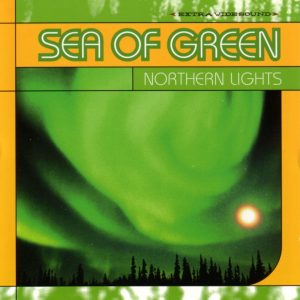 Sea of Green
Sea of Green
Northern Lights
Like, wow, man. In contrast to a certain U.S. president dude, the boys in this Toronto power trio definitely inhale. Not only that, they’re proud of it, man. Like, their PR bumpf sez twice that they took their name not from that line in Yellow Submarine but from a hydroponics ad in High Times. Hey, that’s cool, y’know. And, like, it’s right in line with the all the fuzzy wah-wah guitars and bong-rattling rhythms on their rocking, spaced-out debut EP Northern Lights (which is, like, a dope joke on a whole ‘nother level, you dig?). But you know what’s really freaking me out, man? Thanks to the heavy ’70s rock timbre of these tunes — and singer-guitarist Travis Cardinal’s nasal pipes — Sea of Green actually sound less like Kyuss and more like another classic rock outfit: April Wine circa Harder Faster. Like, wow, eh?
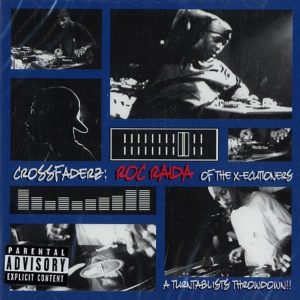 Roc Raida
Roc Raida
Crossfaderz
Too many turntablists just don’t know when to quit. They overload every second of every track with scratches, squiggles, slices and dices until their tunes less resemble a musical project than a science project. Not so with N.Y.C. steel-wheel legend Roc Raida. Maybe it has to do with his long years of service in premier DJ outfit The X-Ecutioners or maybe it’s just his style, but whatever the reason, Roc takes a refreshingly relaxed, old-school approach on his new solo joint. Structured like a hip-hop radio show, Crossfaderz features Roc spinning jams by the likes of Arsonists and Beatnuts, injecting his fleet-fingered fluttering and pyrotechnic technique intermittently and tastefully into the grooves. The effect is more like a jam session between mutually respectful musicians than the boastful overkill of most plate-spinners these days. Call him the Raida of the lost art.




